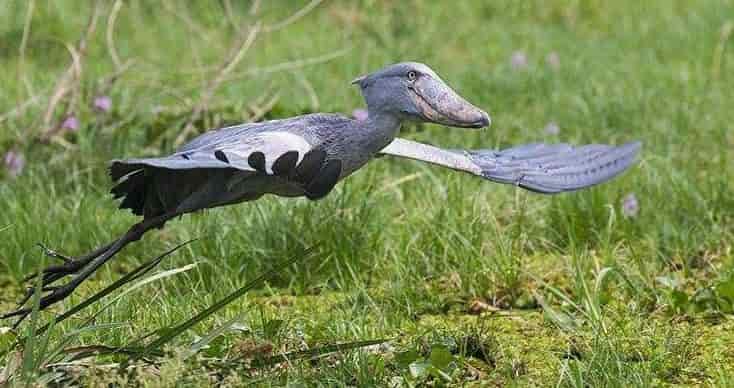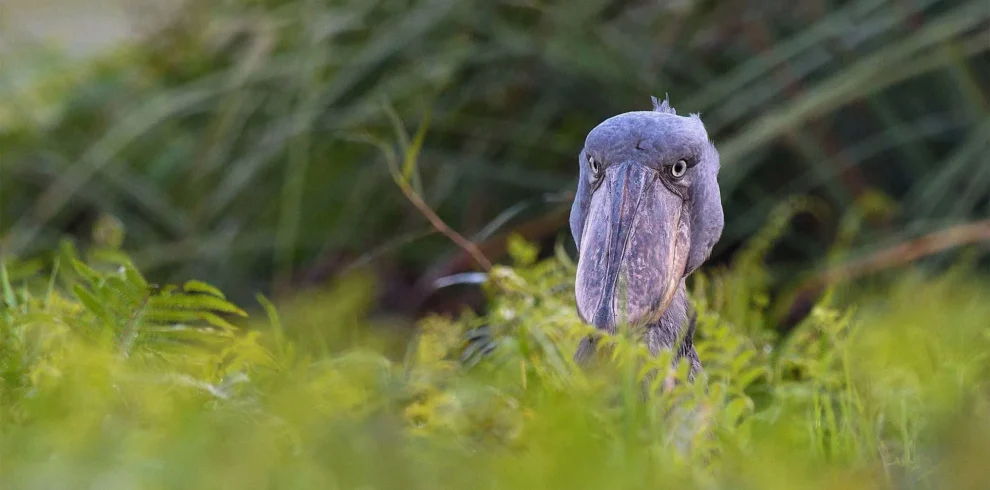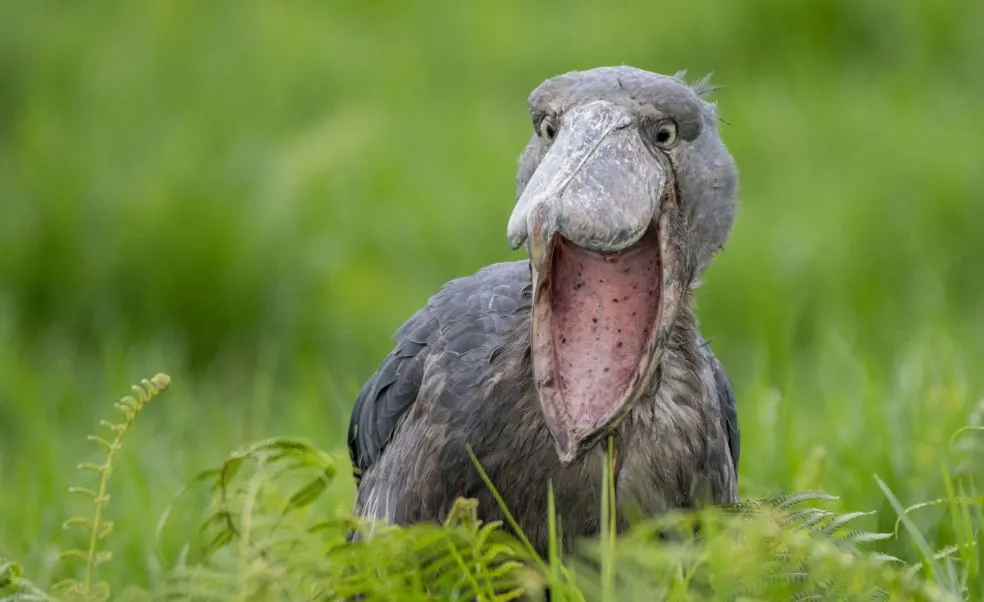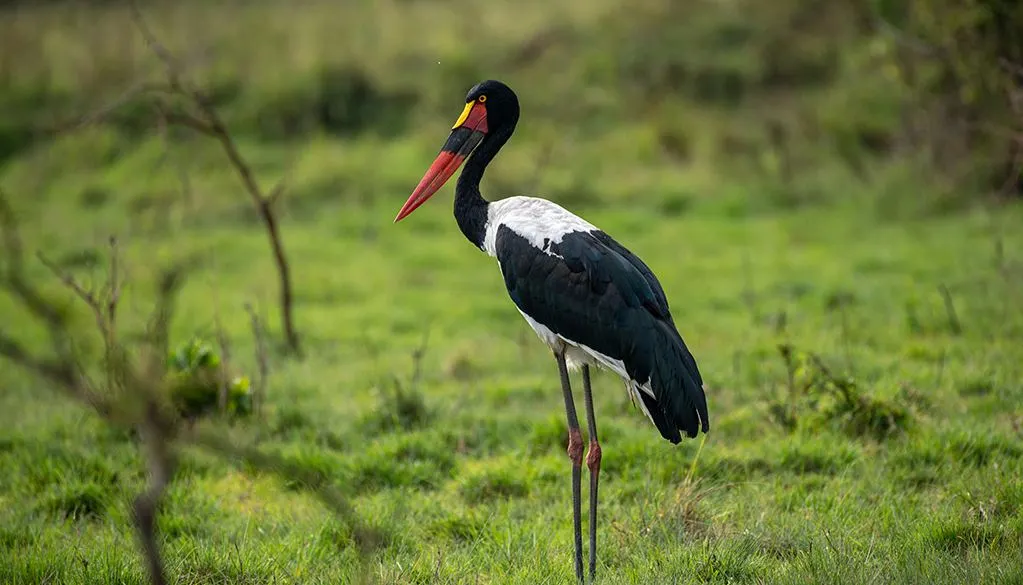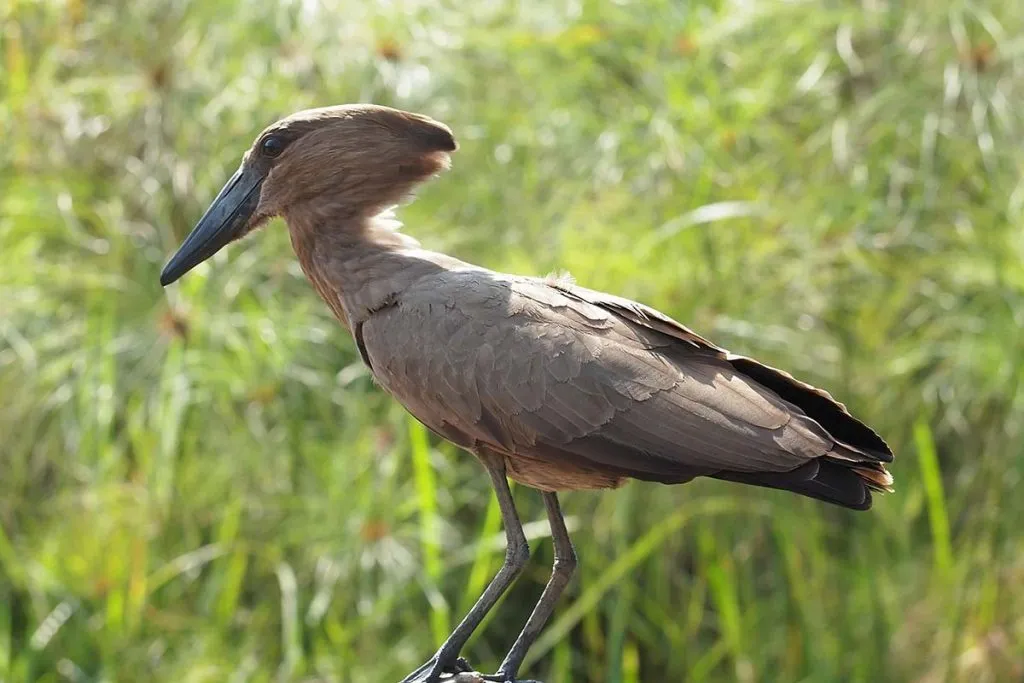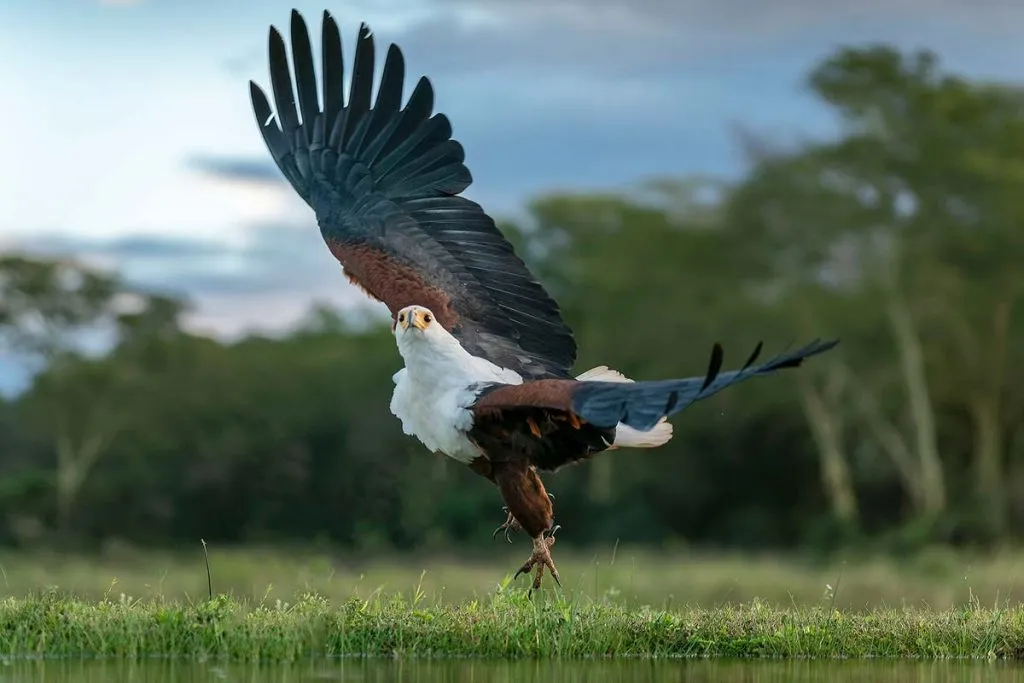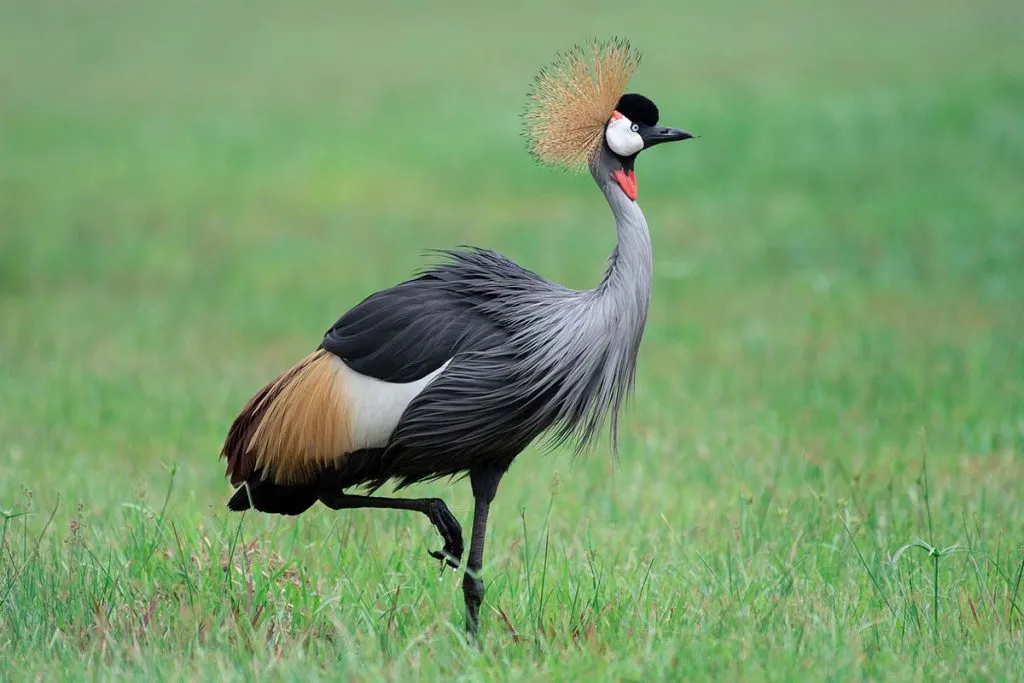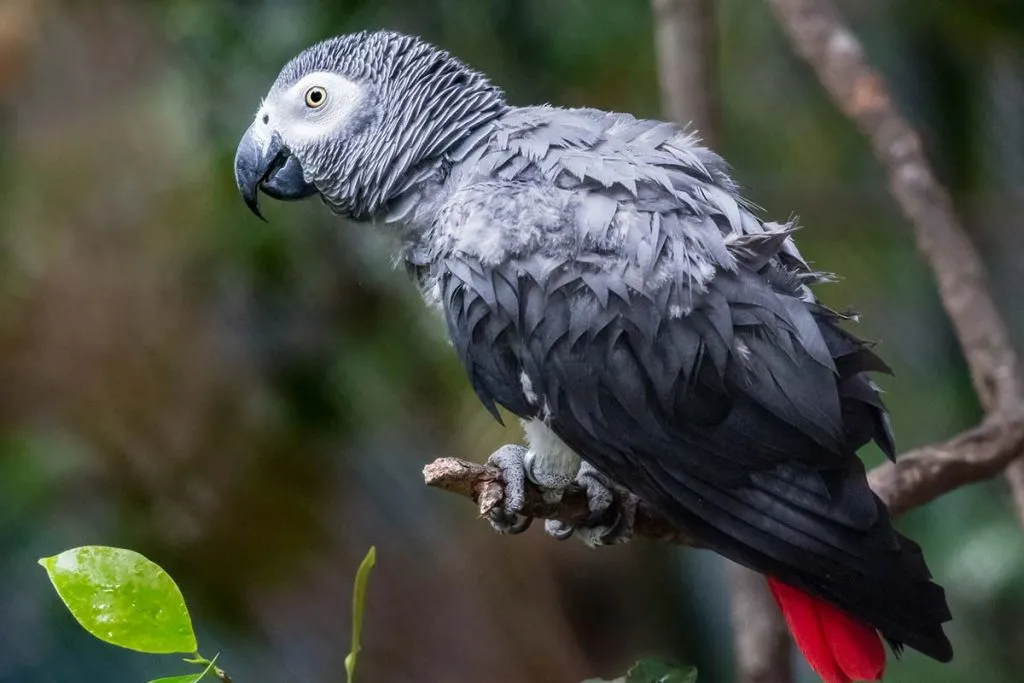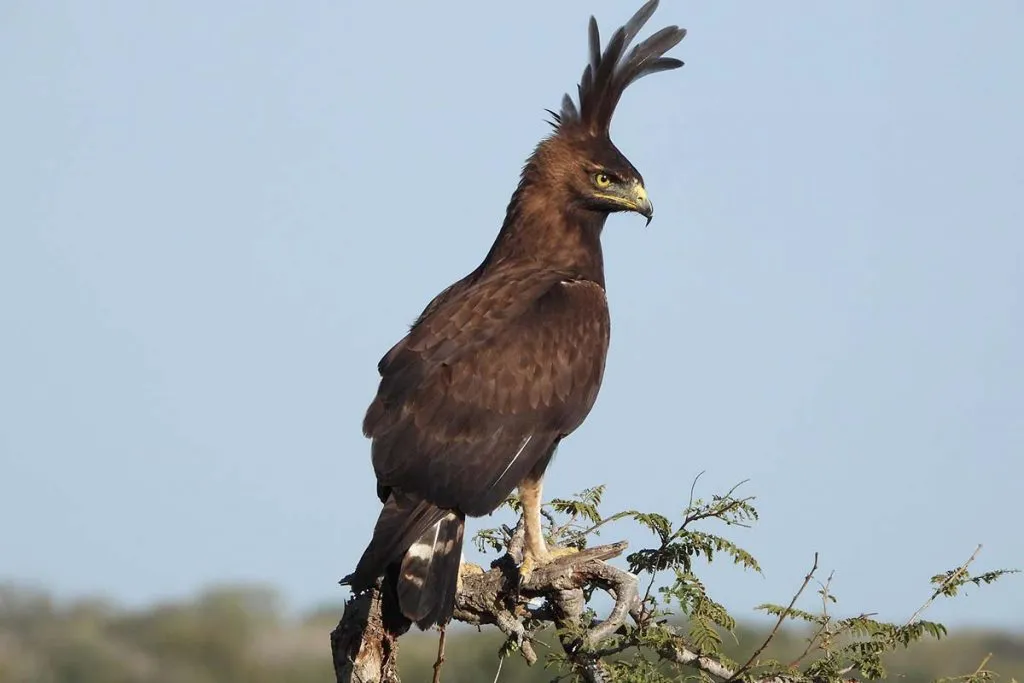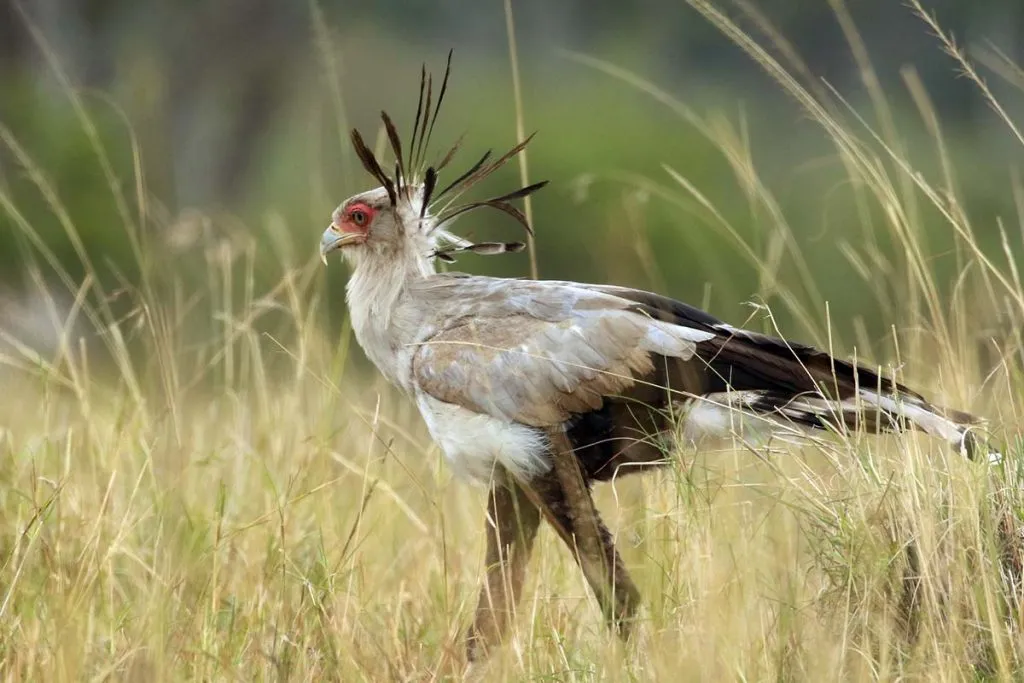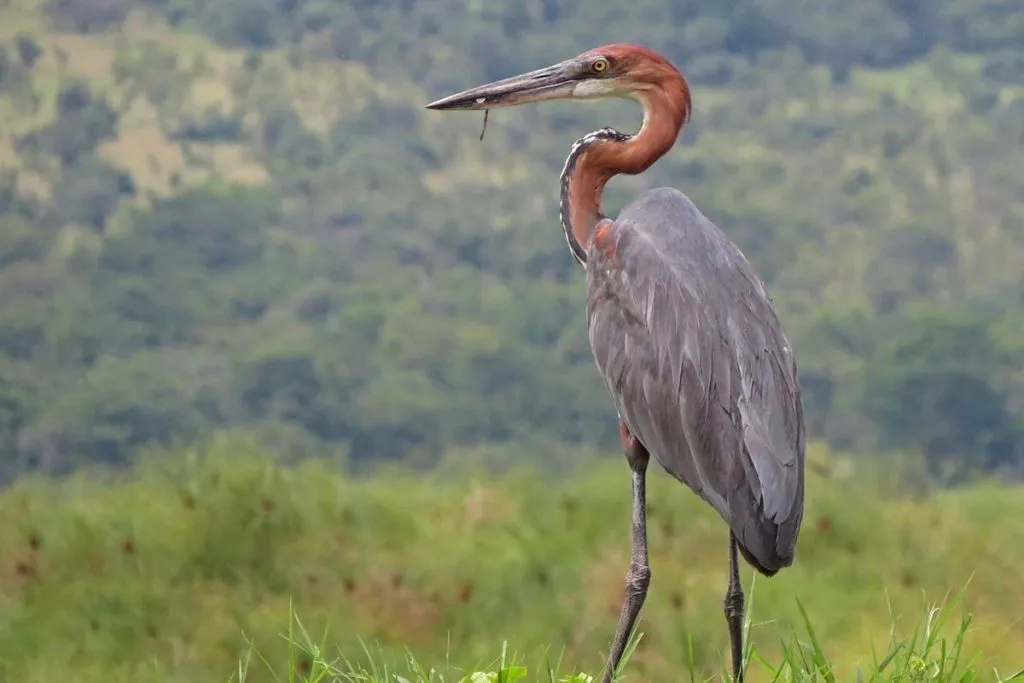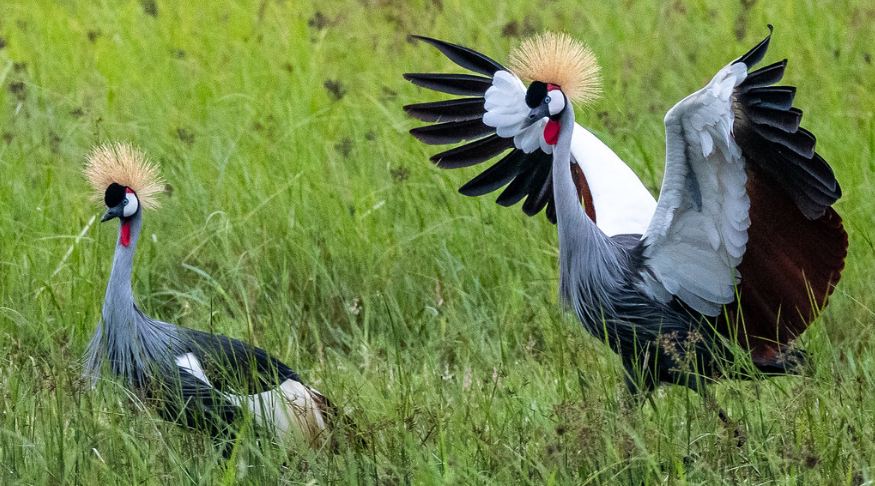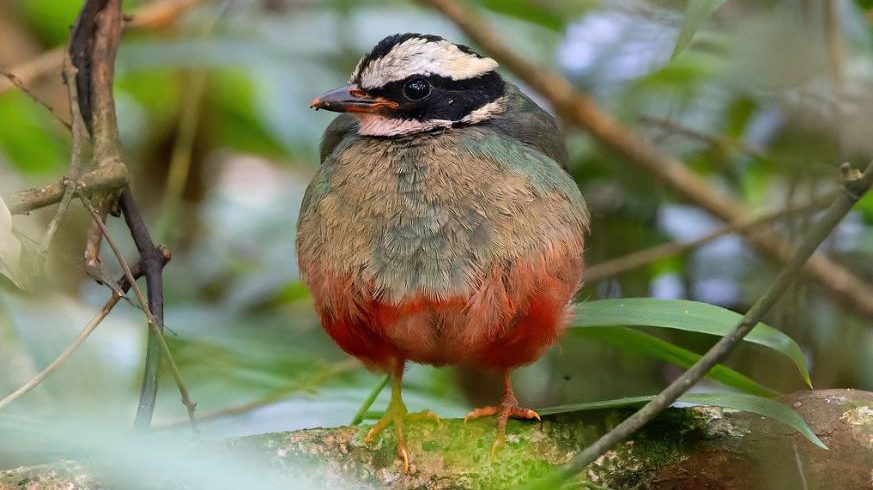Skymate Tours and Travel (Tulambule) designs Uganda birding tours and bird photography tours to all the top birding destinations in Uganda as well as throughout East Africa.
We offer custom tours as well as guided group tours. We work with the best birding guides and lodges in the country, provide all your transportation to the different locations, and arrange fully guided Uganda birding tours. If you are interested in booking a Uganda birding trip, please contact us.
Our expert knowledge and local experience will help create the perfect Uganda bird-watching tour for you. If your focus is more about family adventure, or general interest we can help you with that too.
Top Birding Tours in Uganda - Packages
Why Should I Go Bird Watching In Uganda?
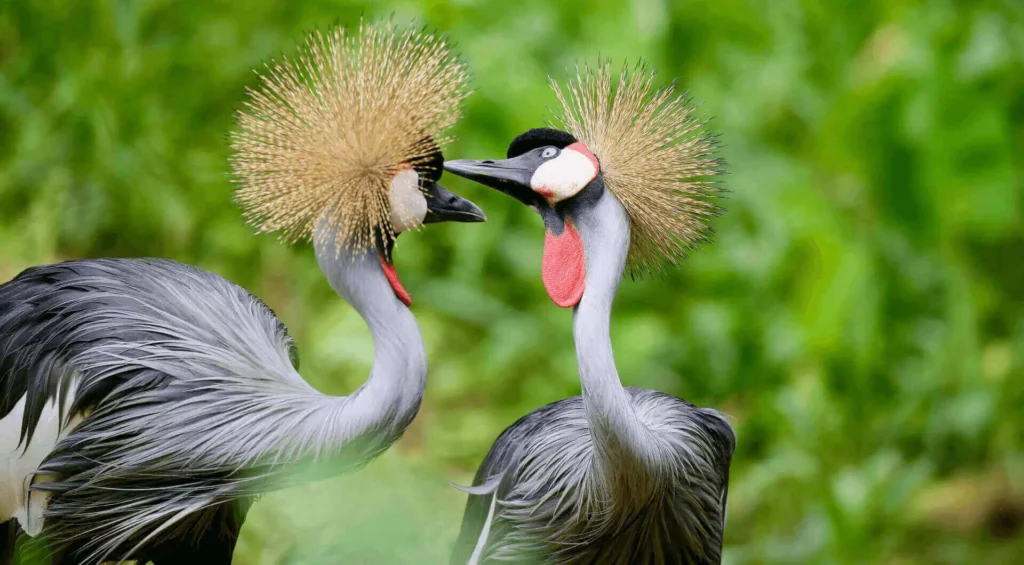
Uganda birding tours allows you the chance to rack up several fantastic sightings.
Over 1090 bird species have been recorded in Uganda. This accounts for about 50% of all Africa’s bird species and 11% of all bird species in the world.
The incredible diversity of birds in Uganda is a result of the country’s astonishing variety of habitats that range from tropical afro-montane rain-forest, grassland savanna, swamps, lakes to arid areas.
Our guided Uganda birding tours suit all levels of bird-watching experience.
Notable Birds in Uganda
Endemic & Near-endemic Birds of Uganda
(E) endemic = only lives in Uganda
(NE) near-endemic = also lives in neighbouring countries
- Archer’s robin-chat (NE)
- Black-lored babbler (NE)
- Blue-headed sunbird (NE)
- Chapin’s flycatcher (NE)
- Dusky crimsonwing (NE)
- Dwarf honeyguide (NE)
- Fox’s weaver (E)
- Golden-winged sunbird (NE)
- Grant’s bluebill (NE)
- Grauer’s broadbill (NE)
- Grauer’s cuckoo-shrike (NE)
- Grauer’s swamp warbler (NE)
- Handsome francolin (NE)
- Hartlaub’s turaco (NE)
- Jackson’s francolin (NE)
- Karamoja apalis (NE)
- Nahan’s francolin (NE)
- Neumann’s warbler (NE)
- Oberlaender’s ground thrush (NE)
- Purple-breasted sunbird (NE)
- Red-faced barbet (NE)
- Red-faced woodland warbler (NE)
- Red-throated alethe (NE)
- Regal sunbird (NE)
- Ruwenzori apalis (NE)
- Ruwenzori batis (NE)
- Ruwenzori double-collared sunbird (E)
- Ruwenzori nightjar (NE)
- Ruwenzori turaco (NE)
- Shelley’s crimsonwing (NE)
- Strange weaver (NE)
- Stripe-breasted tit (NE)
- Turner’s eremomela (NE)
- Uganda woodland warbler (NE)
- Yellow-eyed black flycatcher (NE)
Other Uganda Birding Specials

Treats for avid birders
- Ansorge’s greenbul
- Black bee-eater
- Blue-throated roller
- Equatorial akalat
- Great blue turaco
- Ituri batis
- Jameson’s antpecker
- Lühder’s bush-shrike
- Magpie mannikin
- Masked apalis
- Olive long-tailed cuckoo
- Papyrus gonolek
- Pennant-winged nightjar
- Red-chested owlet
- Red-tailed ant thrush
- Rufous flycatcher-thrush
- Shoebill
- White-bellied crested flycatcher
- White-bellied robin-chat
- White-naped pigeon
- Yellowbill
Best Time for Birding in Uganda

From a bird lover’s perspective, Uganda is fantastic year-round, especially since the main Uganda birding interest lies in the resident birds.
The climate is the major factor to consider.
Uganda receives a lot of rainfall and during the rainy seasons, roads and forest tracks may not be in good condition and rains could interfere with birding activity.
Generally, the best time to go for Uganda birding tours is from late May through September, when there is less rain and food is abundant.
The main nesting season in Bwindi Impenetrable Forest and Mgahinga Gorilla National Parks (key sites for the Albertine Rift endemics, birds which are only found in the Albertine Rift Valley) is May and June, but from mid-April to mid-May the rains might still be too heavy.
February and early March is the only time Semliki is relatively dry, but it is uncomfortably hot in the north, including in Murchison Falls National Park.
December and January are also perfect for birding in Uganda months since the north is not yet too hot and there is less rain in the south.
The best time for primate tracking and wildlife game viewing in the savannah reserves is also in the Dry season, from June to August and December to February.
Top uganda bird Watching Spots
When it comes to birding hotspots, there is a wealth of options for bird enthusiasts on Uganda birding tours. From the shores of Lake Victoria to the remote corners of Mgahinga Gorilla National Park, there are numerous locations that promise unforgettable birdwatching experiences.
Here are just a few of the many birding hotspots in Uganda;
1. Mabamba Swamp – Lake Victoria
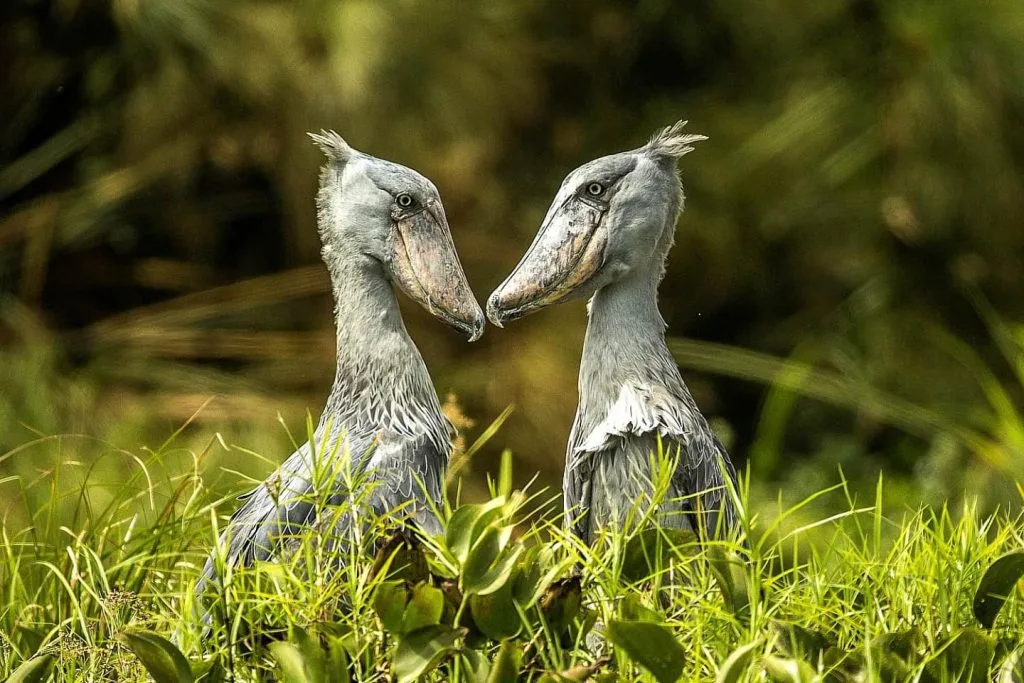
Mabamba Swamp is a Ramsar Site (Wetland of International Importance) and bird watcher’s dream destination.
The 16,500-hectare swamp is one of the best places for Uganda birding tours.
It is located on the edge of Lake Victoria within easy reach of Entebbe and Kampala.
Mabamba derives its name from emamba – the local name for a species of lungfish.
The swamp is home to more 300 species of birds including the massive shoebill stork – the most sought-after bird by Uganda birding tourists and nature lovers.
In fact, Mabamba is the most accessible and reliable place in the world to see this incredible bird in its natural habitat.
What is a RAMSAR site?
A RAMSAR site is a wetland site designated to be of international importance under the Ramsar Convention, or “The Convention on Wetlands”. This convention is an intergovernmental environmental treaty established in 1971 in the Ramsar town of Iran by UNESCO and came into force in 1975.
2. Entebbe Botanical Gardens

The beautiful and bird-rich Entebbe Botanical Gardens are situated approximately 8 km from Entebbe Airport.
They can be reached with in a 10 to 20-minute drive from any hotel or guesthouse in Entebbe. These expansive gardens were laid out in 1898.
They are located on the shores of Lake Victoria and ideal for a leisurely birding walk after checking into your hotel and after you have refreshed yourself.
Entebbe Botanical Gardens also offer visitors on Uganda birding tours a very good introduction to birds of Uganda.
They are a reliable site for the endangered and super-intelligent African Grey Parrot. Other birds here include;
- Great Blue Turaco
- Double-toothed Barbet
- Black-and-white-casqued Hornbill
- White-throated Bee-eater
- Palm-nut Vulture
- Orange Weaver
- Black-headed Gonolek
What Kind of Birder are you?
Similar to birds, birdwatchers are tricky to classify. And mislabeling one can be perilous. I have referred broadly to birders, but what kind of birder are you? Generally speaking, it comes down to levels of enthusiasm and dedication.
- Ornithologists are people who study birds, this is their profession.
- A birder is someone who enjoys watching birds
- Twitchers and chasers will travel far and wide to add birds to their lists, especially rarities.
- Listers and tickers both keep lists of the birds they have seen, it’s not uncommon for them to have many different lists including overall lists and local lists.
3. Budongo Forest Reserve

Budongo Forest, with over 360 bird species, is another great place for Uganda birding tours.
The forest is located on the southern edge of Murchison Falls Park.
It is a large (825 square kilometers) tract of natural tropical rain-forest that offers excellent birding and chimpanzee trekking in Uganda.
It is also the largest natural forest area in all of East Africa.
It has the legendary “Royal Mile”, a premier forest birding road that lies under a lush forest canopy. It is probably one of Africa’s most famous birding sites.
The forest road offers opportunities of spotting some fantastic birds like;
- Nahan’s Partridge
- White-thighed Hornbill
- Blue Malkoha
- Sabine’s and Cassin’s Spinetail
- Blue-throated Roller
- Chestnut-capped Flycatcher
- Yellow-rumped Tinkerbird
- Yellow-browed Camaroptera
- Lemon-bellied Crombec
- Ituri Batis
- Forest Robin
- Narina Trogon
- Hairy-breasted Barbet
- Great Blue Turaco
- Dusky Long-tailed Cuckoo
- Chocolate-backed Kingfisher
- African Dwarf Kingfisher
- Red-tailed Bristlebill
You may also like; chimpanzee trekking in Budongo Forest
4. Bwindi Impenetrable National Park
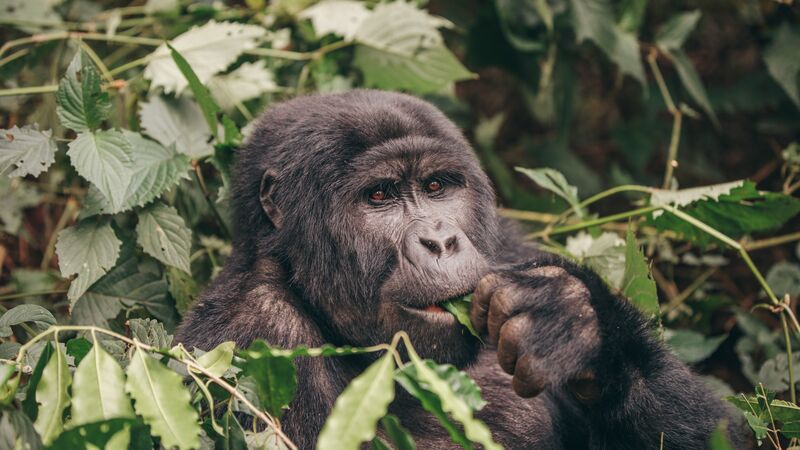
Bwindi Impenetrable National Park which is home to half of the world’s population of endangered mountain gorillas is undoubtedly the best forest birding spot in all of East Africa, if not the entire continent.
This forest heaven boats about 350 species of rare birds of Uganda, including 23 Albertine Rift endemics. Here are the best birding spots in Bwindi:
Buhoma
Uganda birding tours in the forest trails of Buhoma offers the best chance to catch a glimpse of olive long-tailed cuckoo, bar-tailed trogon, dusky tit, Abyssinian groundthrush, white-bellied robin-chat, equatorial akalat, grey-chested iladopsis, and red-throated alethe.
You can also see white-eyed slaty and white-bellied crested flycatchers, the enigmatic Chapin’s flycatcher, white-browed crombec, Neumann’s warbler, black-faced prinia, handsome francolin, Jameson’s antpecker, black-faced rufous warbler, and northern double-collared sunbird.
Other special species of birds in Buhoma include;
- Willcock’s honeyguide
- Black bee-eater
- Black-billed weaver
- Magpie manikin
- The newly described Willard’s sooty boubou
- Sooty flycatcher
- A variety of forest starlings like Waller’s, Stuhlmann’s and narrow-tailed.
What is a bird-watching ‘lifer’?
Birdwatchers use the word “lifer” to describe a species of bird that they have seen and positively identified for the first time. A bird becomes a “lifer” upon its first sighting, and many birders fondly remember their favorite “lifers.”
The Neck
Another fantastic place for Uganda birding tours in Bwindi is the Neck.
This a transitional area between Buhoma and Ruhija offers great sightings of pink-footed puffback, black sparrowhawk, western bronze-naped pigeon, Cassin’s honeybird, cinnamon-chested bee-eater, white-chinned prinia, Petit’s cuckooshrike, the rare tiny sunbird and the dapper brown-capped weaver.
Away from the indigenous forests, amongst vegetation fringing the tea estates you can see the highly sought-after dusky twinspot, streaky and thick-billed seedeaters, yellow-bellied, Kandt’s and black-crowned waxbills, western citril and yellow-crowned canary.
Here, you can also find the noisy Chubb’s cisticola, alert Mackinnon’s shrikes, and with luck marvel at a sight of the striking Doherty’s bushshrike.
Ruhija Sector
Ruhija is your next Uganda birding tours hotspot in Bwindi Impenetrable Forest National Park.
And while the trek down to Mubwindi Swamp is not for the faint-hearted, this a dream place for the serious birder looking for the most unique birds of Uganda.
Down there resides the most wanted of Bwindi’s Albertine Rift endemics – the rare and localised Grauer’s broadbill – one of most sought-after birds in Africa.
This globally threatened species is only known from 2 sites on Earth, the other being a remote forest in eastern Democratic Republic Congo.
Other species to watch out for in Ruhija include;
- Carruthers’s cisticola
- Grauer’s swamp warbler
- Black-billed turaco
- Barred long-tailed cuckoo
- Dwarf honeyguide
- Abyssinian thrush
- White-starred robin
- Archer’s ground-robin
- Stripe-breasted tit
- Mountain illadopsis
- Rwenzori apalis
- Rwenzori batis
- Mountain sooty boubou
- Lagden’s bushshrike
- Oriole finch
On the flowering symphonias you can spot the incredible blue-headed, regal and scarce purple-breasted sunbirds, all highly desired Albertine Rift endemics.
Also here are dusky, red-faced and the phantom-like Shelley’s crimsonwing.
As the sun sets, Ruhija sectors provides your best-bet African wood owl, Rwenzori Nightjar, and if you are very lucky, the rare Fraser’s eagle-owl.
What are Uganda’s endemic species?
An endemic species is any species that is found only in that area. Uganda one endemic bird species called the Fox’s weaver that is found nowhere else in the world. Uganda also has 24 birds that are endemic to the Albertine Rift region but the can also be seen in Rwanda, Burundi and DR Congo.
5. Murchison Falls National Park
Murchison Falls National Park is Uganda largest national park boasting the world’s strongest waterfall – formed as the mighty Nile River is forced through an 8-metre gap in the rocks.
The park hosts over 450 bird species and 76 mammals, including 4 of the Big Five.
Birding here can be done on a boat cruise on the Nile, via a game drive, or a nature walk.
The types of habitats include riverine woodland, swamp, forest, palm savannah and acacia-dotted plains.
The riverine thickets contain double-toothed barbet, white-crested turaco, red-throated bee-eater, Heuglin’s francolin, buff-bellied warbler, Silverbird, bar-breasted firefinch and black-headed batis.
Near the chimp’s research camp, you can find the Puvel’s illadops.
The gorgeous palm dotted savannah offers excellent sightings of Abyssinian ground-hornbill, Secretary bird, Senegal lapwing, and the strange-looking piapiac.
The Nile delta is of course home to the near-mythical shoebill and Grey-crowned cranes – the national birds of Uganda.
On a night game drive, you can see a plethora of species like pennant-winged nightjar and greyish eagle-owl.
You may also like; best lodges in Murchison Falls National Park
6. Kibale Forest National Park
The 776 km2 Kibale National Park is a verdant tropical rainforest, protecting diverse array wildlife.
The forest is reputable for having the highest density and diversity of primates in Africa including over 1500 wild chimpanzees and numerous monkeys.
Kibale is also home to 325 species of Uganda birds, including 6 species that are endemic to the Albertine Rift.
Some of the special birds of Uganda here include African grey parrot, African pitta, black-eared ground-thrush, olive long-tailed cuckoo, Abyssinian Ground Thrush, black bee-eater, black-bellied seedcracker, red-chested owlet, and the innately comic great blue turaco.
But the most sought after bird species is the Green-breasted Pitta. This enigmatic little bird is only found deep in Central Africa’s tropical forests.
Also the nearby Bigodi Wetland is a great haunt for specials such as speckled tinkerbird, white-spotted flufftail, Bocage’s bushshrike, snowy-crowned robin-chat and western nicator.
You may also like; what to expect on the Kibale Forest Chimpanzee trek?
7. Queen Elizabeth National Park
It is no exaggeration to suggest that Queen Elizabeth National Park is one of the best destinations for bird watching in Africa.
The 1978 km2 park has an astonishing variety of habitats including savannah grasslands, tropical rainforest, wetlands, rivers, fresh-water lakes, and saline crater lakes.
These habitats host 610 different bird species – the second-highest of any park on the continent.
There is also 95 species of mammals including tree-climbing lions and over 5000 hippos, plus many antelopes and crocodiles.
Lakes, rivers, and wetlands are home to a plethora of plovers, storks, herons, pelicans, egrets and several other birds of Uganda.
In forest of the Kyambura Gorge and Maramagambo, you can find cuckoos, woodpeckers, and warblers.
Also impressive are the hundreds of flamingos that congregate at Lake Munyanyange from around August and November.
You may also like; lodges in Queen Elizabeth National Park
8. Semuliki National Park
Semuliki National Park in the Albertine Rift Valley is an extension of West African jungle that stretches all the way from Equatorial Guinea through Congo, forming a habitat for some special Guinea-Congo biome species.
The 219 km2 park contains east Africa’s only lowland tropical rainforest, and is contiguous with the Democratic Republic of Congo’s huge Ituri forest.
It is one of the richest areas of flora and fauna diversity in Africa, especially for bird and butterfly species.
More than 440 bird species have been recorded in the forest, including 50 that are found nowhere else in east Africa!
The fantastic birds of Uganda to look out for here include the African piculet, Congo serpent-eagle, Maxwell’s black weaver, long-tailed hawk,blue-billed malimbe, and yellow-throated nicator.
You also look out for;
- Nkulengu rail
- Lyre-tailed honeyguide
- Dwarf honeyguide
- Black dwarf hornbill
- Piping hornbill
- White-crested hornbill
- Red-billed dwarf hornbill
- Black-wattled hornbill
- Orange weaver
9. Mgahinga Gorilla National Park
Like Bwindi, Mgahinga Gorilla National Park the home of gorillas and golden monkeys offers some of the best birding in East Africa.
It is located in the southern part of Uganda, bordering Rwanda and Democratic Republic Congo and comprises dense highland forest on the slopes of 3 extinct volcanoes.
Mgahinga Gorilla National Park offers high levels of endemism and the challenges of forest birding make this one of the most electrifying places to search for the feathered specials that keeps eager birders awake at night.
This bird-watching haven has about different recorded species, including 12 Albertine Rift endemics.
These birds of Uganda include Rwenzori Turaco, Rwenzori nightjar, Rwenzori batis, Handsome francolin, Kivu ground thrush, Dusky Crimsonwing, Red-throated Alethe, Archer’s robin chat, Stripe-breasted tit and Regal sunbird.
You can also enjoy amazing sights of;
- Black-headed waxbill
- Western green Tinkerbird
- White starred robin
- Yellow vented bulbul
- White-naped raven
- Bronze sunbird
- Red-faced woodland warblers
- Pin tailed whydahs
10. Lake Mburo National Park
Lake Mburo National Park is home to about 320 species of Uganda birds.
It is the most accessible national park in Uganda and home to many Zebras, Antelopes, Buffalos, and Giraffes.
The park habitats include lakes, wetlands, forest, dry hillsides, rocky outcrops and dense savannah. Birding is done on game drives, boat cruise and nature walks.
There some localised species in the park and topping that list are red-faced barbet, Tabora cisticola, green-capped eremomela, golden-tailed woodpecker, spot-flanked barbet, and grey penduline tit.
Other fantastic birds include, brown parrot, barefaced go-away bird, black-billed barbet, Nubian woodpecker, papyrus canary, papyrus gonolek, African Finfoot, and shoebill, white-winged warbler, African water rail and white-backed night-heron.
You can also look for;
- Abyssinian ground-hornbill
- Yellow-throated leaflove
- Kingfishers
- Coqui francolin
- Black-bellied bustard
- Red-headed lovebird
- Lilac-breasted roller
- Green wood-hoopoe
- Common scimitarbill
- Narina trogon
- Nubian woodpecker
- Trilling cisticola
- Northern black flycatcher
- Chin-spot batis
- Rufous-chested swallow
- Yellow-throated longclaw
- Southern red bishop.
- African scops owl
- Verreaux’s eagle owl
- Pennant-winged nightjar
You may also like; lodges in Lake Mburo National Park
Recommended Birding Books
1. Birds of East Africa: Kenya, Tanzania, Uganda, Rwanda, Burundi
- A must-buy as the best field guide that’s complete for Uganda.
- Terry Stevenson and John Fanshawe
2. eGuide to Birds of East Africa (app)
- The app version of the above book is comprehensive for Uganda.
- Terry Stevenson and John Fanshawe
3. Birds of Africa: South of the Sahara
- Complete for Uganda, but the vast scope makes it cumbersome.
- Ian Sinclair and Peter Ryan
4. Birds of Uganda: A Photographic Guide
- Far from complete (only 280 species) but lovely to look at.
- Quentin Meunier and Sherry McKelvie



